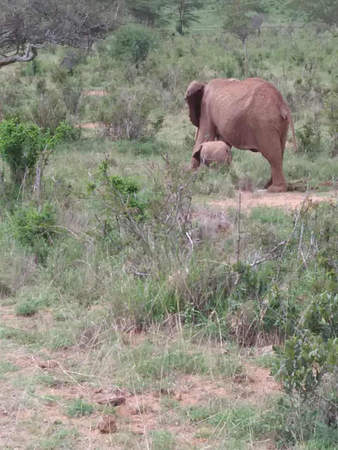In the heart of a challenging and conflicted landscape, a compelling narrative unfolds—the story of a heroic effort to rescue a baby elephant ensnared in both a physical trap and the complex web of human-wildlife conflict. This tale of resilience, compassion, and collaborative action paints a vivid picture of the triumph of empathy over adversity.

The scene was set in a region where lush forests and human settlements collided, creating a zone of tension between humans and wildlife. In this delicate balance, a baby elephant found itself ensnared in a trap set by locals seeking to protect their crops. The dire situation was further complicated by the heightened conflict between humans and elephants, a consequence of competing interests for limited resources.

Word of the trapped baby elephant quickly spread, reaching the ears of dedicated wildlife conservationists and concerned locals. Recognizing the urgency of the situation, a team assembled, comprising wildlife experts, veterinarians, and community leaders. Their mission was not only to free the entrapped elephant but also to address the underlying issues contributing to the conflict.

As the rescue mission unfolded, it became evident that the challenges were multifaceted. The physical trap, a cruel reminder of the struggles faced by wildlife in human-dominated landscapes, required delicate expertise to dismantle. Simultaneously, efforts were made to engage with local communities, fostering understanding and cooperation to mitigate the root causes of conflict.

The rescue team worked tirelessly, navigating through difficult terrain and overcoming logistical hurdles. The trapped baby elephant, visibly distressed, served as a poignant reminder of the interconnectedness of human actions and wildlife well-being. Every moment counted, and the collaborative efforts aimed not only to save a single life but to initiate a ripple effect of positive change.

The persuasive aspect of this narrative lies in the collective determination to bridge the gap between conservation and community interests. Through daogue, education, and a shared commitment to coexistence, the rescue team conveyed a powerful message: the well-being of both humans and wildlife is intertwined, and finding sustainable solutions requires collaboration, empathy, and a long-term perspective.

As the sun set on the day of the rescue, a once-trapped baby elephant took its first steps to freedom, guided by the watchful eyes of those who had come together to defy all odds. The narrative that unfolded was not just a rescue story; it was a testament to the human capacity for compassion, understanding, and the ability to overcome challenges for the greater good.

This persuasive tale reaches beyond the immediate rescue and conflict resolution—it calls on readers and audiences to reflect on their own roles in the delicate balance between humanity and nature. It serves as a reminder that, by fostering empathy and collaboration, we can create a world where the resilience of one baby elephant echoes the resilience of a collective striving for harmonious coexistence.





